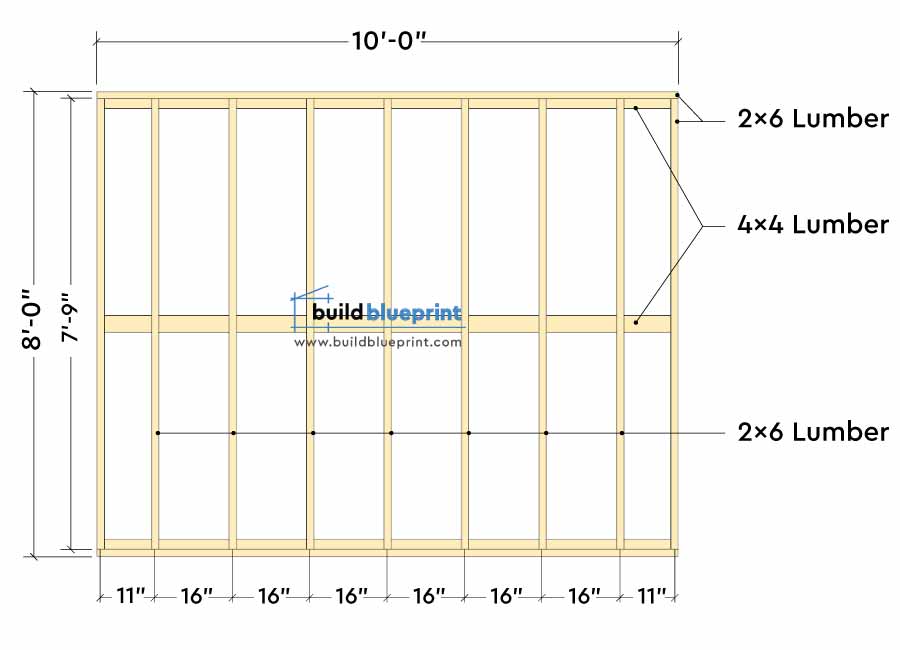Sunday, November 10, 2024
How to build an 8x10 shed that doesn’t break the bank

Alright, you're looking to build an 8x10 shed and you want to do it without emptying your wallet? You've come to the right place. We're about to break down how to build a shed that's affordable, functional, and something you can be proud of.
Before we get started, let’s talk about your goals.
What will you use this shed for? Storage for tools, bikes, garden equipment, a workshop, a hangout space? This will help you decide what features are essential.
What materials are you comfortable working with? Wood is the most common, but you can also build a shed with metal or even recycled materials.
How much time and energy are you willing to invest? Building a shed takes time, but there are ways to make it more manageable.
Now, let’s dive into the budget-friendly shed building plan!
1. Planning and Design:
Start with a sketch. This doesn't need to be fancy, but it helps visualize the shed's layout. Think about where you want the door, windows, and any shelving you might need.
Don't overcomplicate things. Keep the design simple. This will save you time and money.
Think about your site. Make sure your shed fits the space you have. Consider factors like sunlight, drainage, and accessibility.
Choose your materials. Wood is generally the most affordable option. For framing, consider using pressure-treated lumber for the foundation and floor joists to prevent rot. For siding, you can choose from affordable options like plywood, cedar, or even corrugated metal. Think about the local lumber prices and look for deals.
Consider pre-made components. You can save time and money by purchasing pre-made shed doors, windows, and even roof trusses. Many home improvement stores sell these, and you can even find them online.
2. Building the Foundation:
The foundation is your shed's base. This is where you’ll be spending some time, so make sure it's solid. A simple concrete pad is an affordable and durable option.
Decide on the size and location of your pad. The concrete should extend at least 4 inches beyond the shed's footprint for support.
Hire a concrete contractor or do it yourself. If you're handy, you can pour the concrete yourself. But if you’re not comfortable with concrete work, a contractor can save you time and ensure a quality foundation.
3. Framing the Shed:
This is where the fun begins! Building the frame is a rewarding step and a good way to test your carpentry skills.
Use pre-cut lumber. Many lumber yards offer pre-cut framing lumber, saving you time and ensuring accuracy.
Follow your design. Carefully build the walls and roof using your plan as a guide. Make sure your measurements are precise.
Consider using recycled materials. Old pallets, fence boards, or even salvaged wood can be used for the shed frame.
4. Sheathing and Siding:
Sheathing provides a solid base for the siding and protects your shed. You can use plywood, OSB, or even corrugated metal for this.
Siding gives your shed its exterior look. Choose a material that fits your budget and style. Plywood, cedar, corrugated metal, or even vinyl siding can all look great.
For a budget-friendly look, consider painting the shed. A fresh coat of paint will spruce up the look and protect your siding.
5. Roofing and Finishing Touches:
Choose a roofing material. Shingles are affordable and durable. You can also consider metal roofing for a modern look and longer lifespan.
Don’t forget the flashing! Install flashing around the roof edges and chimney (if you’re adding one) to prevent water damage.
Install the doors and windows. Pre-made doors and windows save time and money. Make sure they fit snugly in the frame to prevent drafts.
Add finishing touches. Install trim, moldings, and hardware like handles and hinges. You can even add a decorative overhang or eaves for a more finished look.
6. Finishing the Interior:
Insulate your shed. Adding insulation will make your shed warmer in the winter and cooler in the summer. Fiberglass batt insulation is a good affordable option.
Add flooring. You can use plywood, concrete, or even tile. Consider a durable and easy-to-clean material that’s appropriate for your shed’s purpose.
Install shelving and storage. This is a great way to maximize your shed's space. You can build your own shelves using lumber or buy ready-made shelving units.
Add lighting and electrical outlets. These are essential for a functional shed, especially if you plan on using it as a workshop or storage space.
7. Maintenance:
Keep your shed clean and organized. This will make it easier to find what you need and prevent damage to your belongings.
Check for leaks and damage. Regular inspections can prevent problems before they become major issues.
Paint or stain the exterior every few years. This will keep your shed looking good and protect the siding from the elements.
Here are some bonus tips for building a shed on a budget:
Get creative with your design. Don't be afraid to experiment with different materials and techniques.
Look for discounts and deals. Home improvement stores often have sales on lumber and building supplies.
Ask for help from friends and family. Having extra hands on deck can make the project go faster.
Shop around for the best prices. Don’t just buy from the first store you visit. Compare prices and look for deals online.
And remember, building a shed is a rewarding experience! You'll be able to enjoy your hard work and the sense of accomplishment that comes from creating something with your own hands. Just take it one step at a time, and you'll be surprised at how quickly your budget-friendly shed comes together. Good luck!
No comments:
Post a Comment